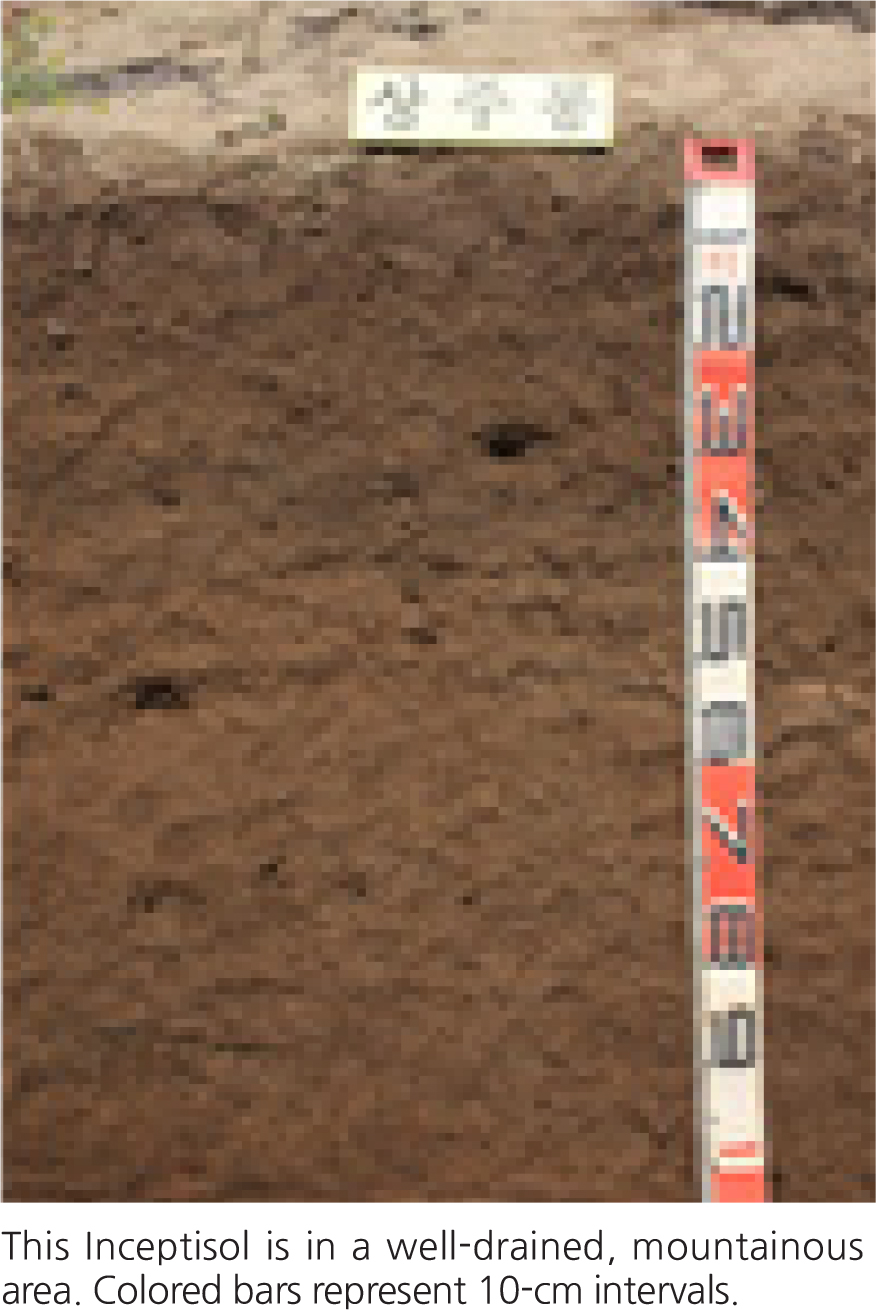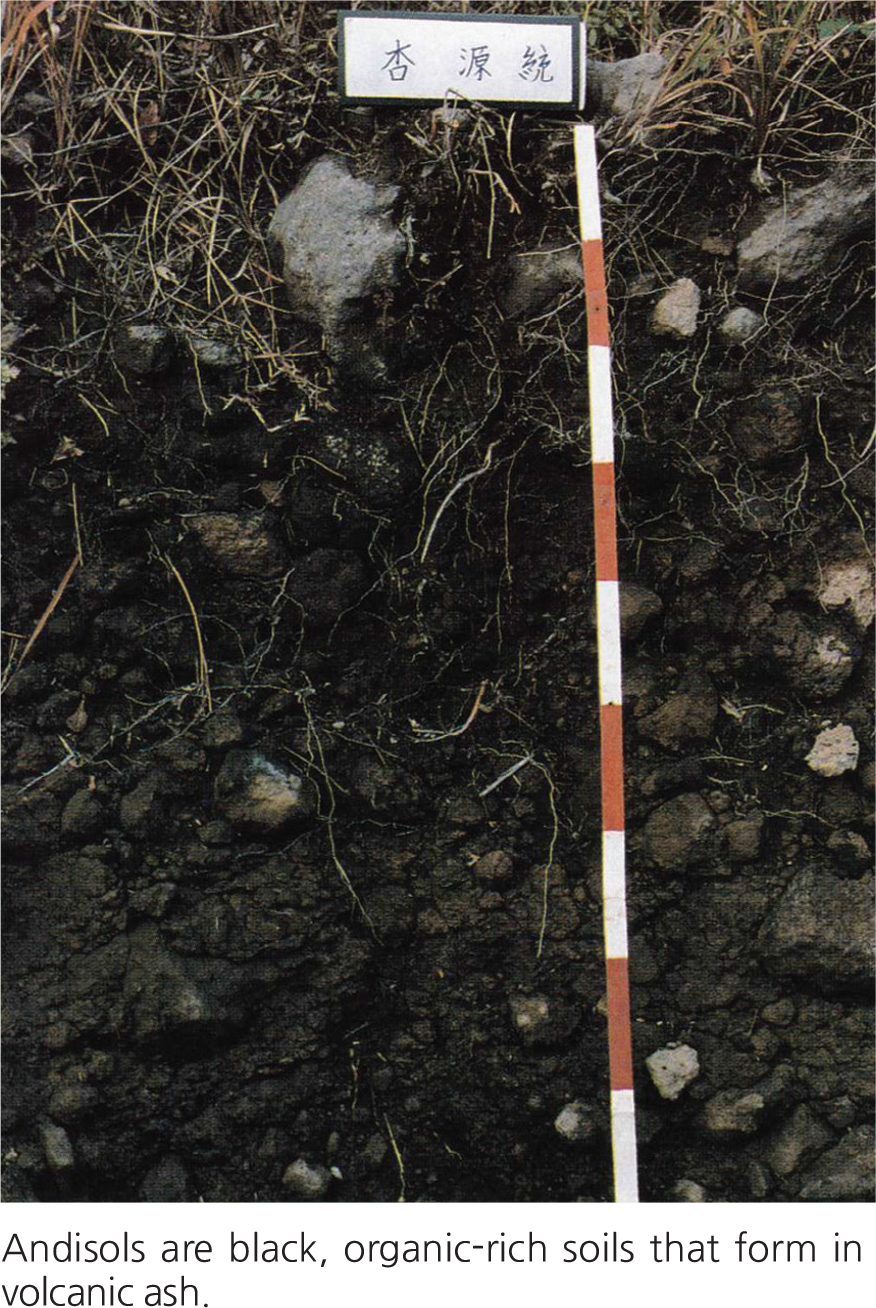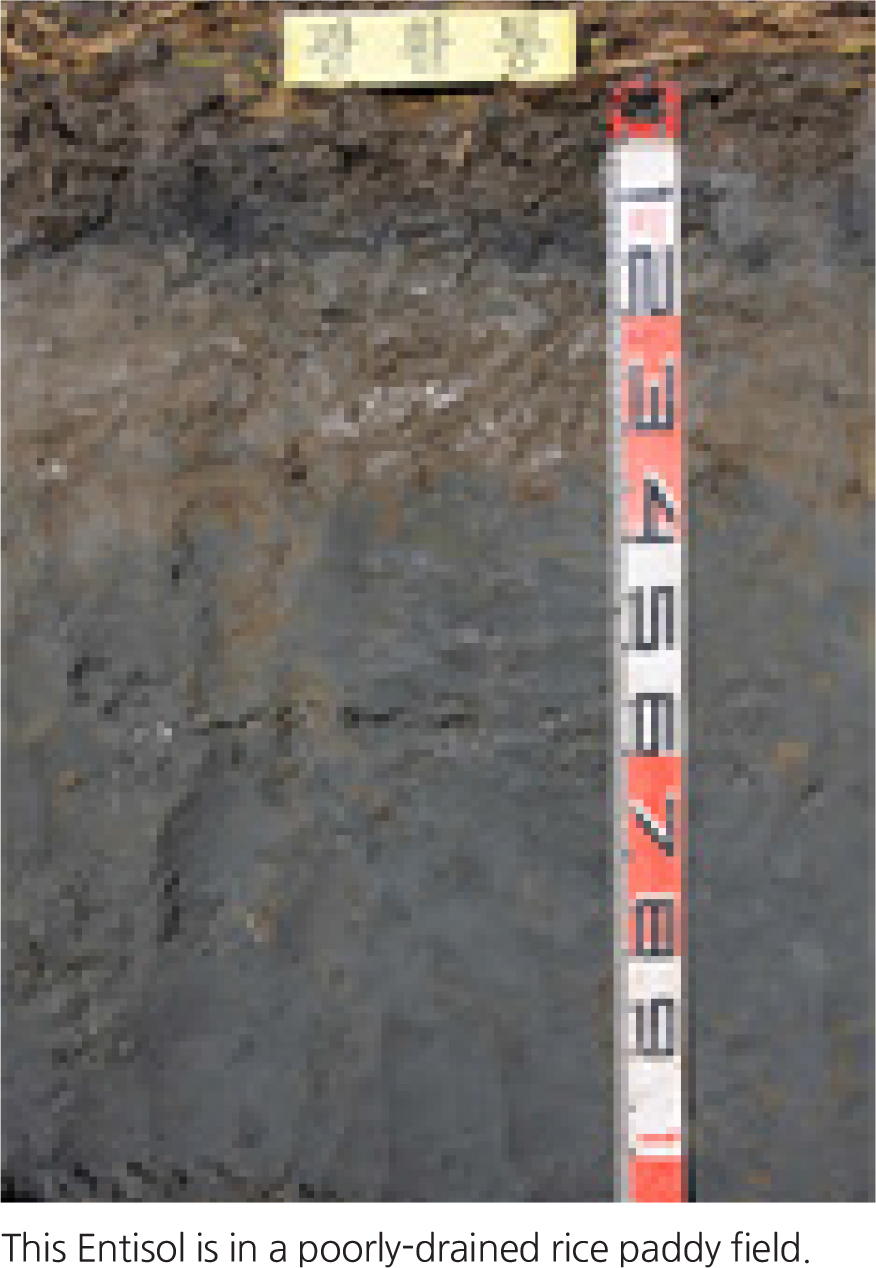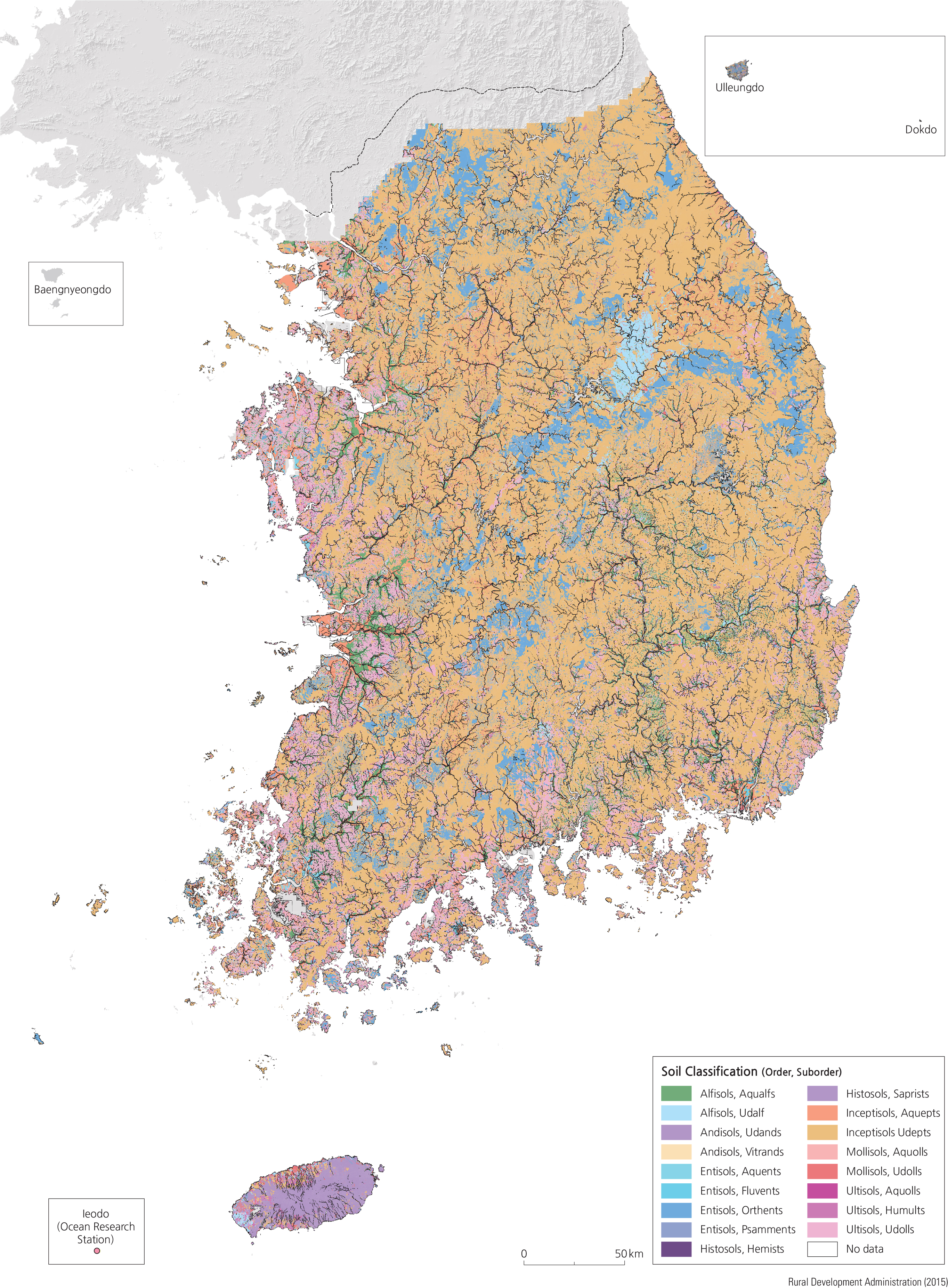Soil is an important natural medium for supporting plant growth and crop production. Recent changes in global climate and ecosystems are placing greater emphasis on the role of soil as a surface medium that connects water, atmosphere, and terrestrial ecosystems. In order to respond to increasing societal demands for detailed knowledge in this field, it is necessary to gain a better understanding of the spatial distribution, temporal changes, and nutrient status of soils.
Soil classifications are generally made by utilizing the Soil Taxonomy established by the United States Department of Agriculture (USDA). According to Soil Taxonomy (which categorizes 12 orders of soil recognized on a global scale), Korea has 7 orders, mapped by color in the next page. A representative soil profile, a side view of a soil as seen in a soil pit, is shown for each of these soil orders below.
Over half of Korean territory is covered with Inceptisols, which can be defined as soils that do not have clear soil horizon development. The predominance of Inceptisols indicates that the land surface has undergone radical changes. For instance, rapid soil erosion constantly removes topsoil from slope surfaces, and active deposition in areas such as alluvial fans, valleys, and riverside flats hinders soil horizonation. The characteristics of Korean summers also serve as crucial factors of fast erosion; concentrated precipitation, high temperatures, and high humidity interrupt the accumulation of organic matter and weaken soil formation processes. Additionally, freezing during the winter also prevents active differentiation of soil horizons.
Korea is well-known for its success in combating land degradation. By the end of the Joseon dynasty, many of its mountains were devastated due to long years of slashand-burn farming and firewood logging. The Japanese Colonial Period and the Korean War further deteriorated the situation through severe forest degradation and consequent soil loss. Since the 1970s, however, many of the barren mountains
have successfully been transformed into lush green forest areas and soil quality has steadily improved. Korea’ case of overcoming land degradation serves as a valuable example of sustainable development, particularly for developing countries.




